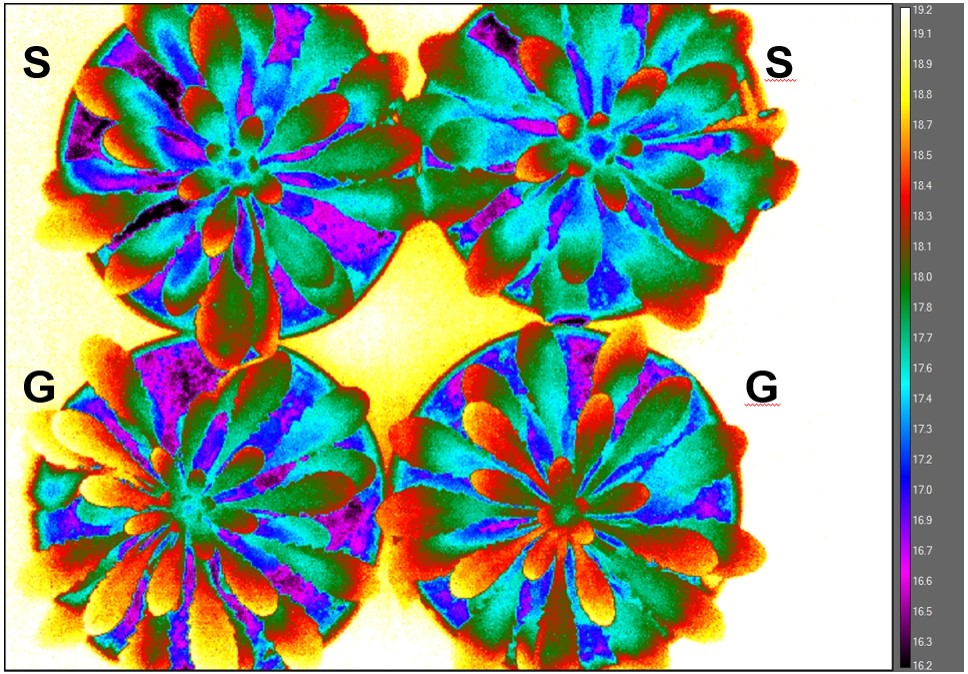Stomata are openings located on the surface of leaves that allow the plant to transpire and assimilate the atmospheric CO2 necessary for its growth. When under environmental pressure, the stomata close rapidly to limit the effects of stress. Thus, they help to reduce water loss in drought situations and to slow down the intrusion of pathogens.
Two cells known as guard cells modulate the opening of the stomata. Their functioning involves a number of chemical signal exchanges within them, which can modify the oxidation level or redox state of certain proteins.
For several years now, Biam researchers have been studying the mechanisms of enzymes that regulate the activity of proteins by modifying their redox state. These enzymes, called thiol reductases, are essential for the development of plants, especially in situations of stress.
The researchers therefore compared the stomatal responses of wild type Arabidopsis thaliana plants with those of mutant lines lacking these reductases. They observed changes in guard cell function in the mutants, with their stomata closing more rapidly under different environmental conditions.
These results reveal an important role for thiol reductases in the control of stomatal closure. The researchers are now continuing this work to discover other enzymes involved in guard cell movements.
This knowledge is essential for understanding the functioning of stomata and could help improve the capacity of plants to adapt to climate change.
 Infrared imaging of leaf temperature in wild type (S) and glutaredoxin S14- and S16-deficient (G) Arabidopsis thaliana. The color scale on the right indicates temperatures between 16.2°C (purple) and 19.2°C (yellow). Plants lacking glutaredoxins have considerably more red or yellow leaves, revealing a higher temperature due to more closed stomata versus the wild type.
Infrared imaging of leaf temperature in wild type (S) and glutaredoxin S14- and S16-deficient (G) Arabidopsis thaliana. The color scale on the right indicates temperatures between 16.2°C (purple) and 19.2°C (yellow). Plants lacking glutaredoxins have considerably more red or yellow leaves, revealing a higher temperature due to more closed stomata versus the wild type.